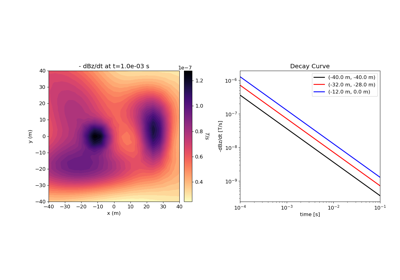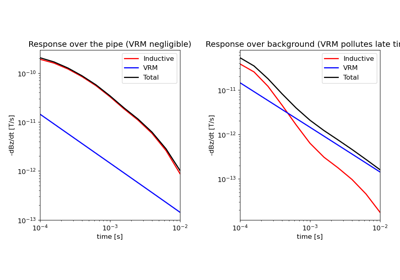simpeg.electromagnetics.viscous_remanent_magnetization.receivers.Point#
- class simpeg.electromagnetics.viscous_remanent_magnetization.receivers.Point(locations=None, times=None, field_type=None, orientation='z', **kwargs)[source]#
Bases:
BaseRxPoint receiver for viscous remanent magnetization simulations
- Parameters:
- locations(
n, 3)numpy.ndarray Receiver locations
- times
numpy.ndarray Time channels
- field_type{‘h’, ‘b’, ‘dhdt’, ‘dbdt’}
Fields being measured.
- orientation{‘z’, ‘y’, ‘z’}
Receiver orientation.
- locations(
Attributes
Field type; i.e. 'h', 'b', 'dhdt' or 'dbdt'.
Receiver locations
Number of data associated with the receiver
Number of receivers
Number of time channels
Orientation of the receiver.
Time channels for the receivers
Universal unique identifier
Methods
Galleries and Tutorials using simpeg.electromagnetics.viscous_remanent_magnetization.receivers.Point#
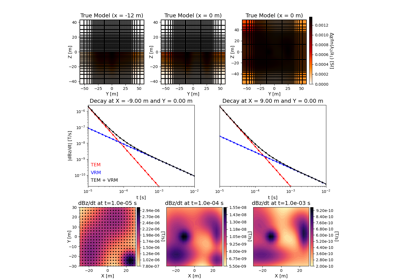
Predict Response from a Conductive and Magnetically Viscous Earth
Predict Response from a Conductive and Magnetically Viscous Earth
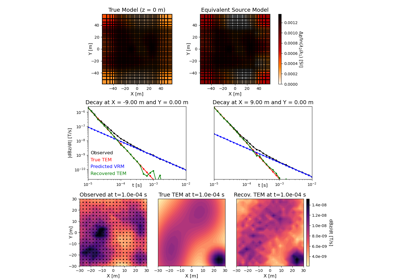
Method of Equivalent Sources for Removing VRM Responses
Method of Equivalent Sources for Removing VRM Responses
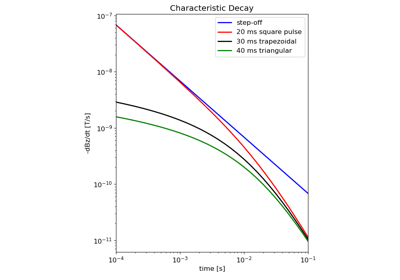
Response from a Homogeneous Layer for Different Waveforms
Response from a Homogeneous Layer for Different Waveforms

